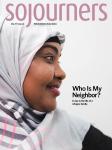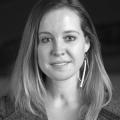REMEMBER THAT you are dust, and to dust you shall return. The prayer said around the world on Ash Wednesday wielded a rather pointed moral to the tail end of the hottest February on record where I live. Penitents in my neighborhood church shuffled in a sun-kissed line to receive ashes on tanned foreheads, summer sandals slapping the floor. Outside, overeager daffodils bloomed their Easter welcome. A strange one, this backward Lent: balmy with a side of dread.
This existential reversal felt nothing if not timely—all through the winter, a collective litany of weary newsfeeds asked whether we really needed quite so much of it. The first months of this year have witnessed a steady erosion of trust in whatever institutions we had left: the federal government, the electoral process, our checks and balances, our freedoms, our faith, each other. Some trace our hard skid sideways to the election, or the Super Bowl, or the Oscars. (I peg it to the Cubs’ win in November. I grew up in Chicagoland—I know reversing a curse has consequences.)
But there’s something particularly dizzying about the separation of church and earth. The globe is getting hotter every year now, but the effects of this ecological trauma, like any grief, are far from linear. If warming simply meant the usual weather, shifted a month early or late, we could figure out how to recalibrate—but our snowfall is breaking records and our ice caps are melting. A winter afternoon can begin as warm as an early summer day and suddenly drop 25 degrees to freezing rain.
“We know we are facing a looming catastrophe of unparalleled proportions — a truly existential crisis,” writes Gillian Caldwell at Grist.
Liturgical seasons are tied to the natural seasons—celebrations of the rhythms of land and body as extended metaphor for our communal spiritual life. Church seasons rely on the poetry of predictable cycles: For each repentance in chill, drizzly early spring, there is resurrection in the burst of late spring flowers; for every dark frost of Advent, God returns at Christmas like the light marking the end of deepest winter.
To see blooms adorning a church on Ash Wednesday—instead of at Easter, when Love comes again like lilies, like “wheat that springeth green”—scrambles the spiritual metaphor. And, to some extent, our rhythms of identity. The Western church is intimately linked with the earth. The Liturgy of Hours was a daily observance with the sun before it came to be tied to mechanized time, and every sacrament, from communion to baptism, is linked to understanding earth’s unfolding at the proper time.
Christians in every wrinkle of the world have spiritual metaphors tied to their own seasons—it’s worth noting that for millions of Christians, Christmas has never involved bitter cold. But “weather weirding” as we’re witnessing is a full-scale disruption. And this collective ecological trauma must, in some ways, have spiritual tremors. “Its effects are insidiously eroding—intrusive, disruptive—not just to the one, but to the whole,” Naisa Wong wrote for Sojourners of ecological trauma’s wear on institutions. “Where safety and sustenance were inherent functions … each passing year renders [us] less dependable, less able to provide.”
On what can the church lean, and lead, in this dislocated season, if our deepest narrative roots can’t find ground? A new ethic of leading through flux will be needed, as will, perhaps, new stories of the seasons. The reign of God in the violets and in the frost that suddenly covers them.
And while the priests and storytellers among us develop new liturgies, there are the words of Jan Richardson:
“Nothing … cries out more for a blessing than when a world is falling apart. … This blessing will simply sit itself beside you … and gently turn your face toward the direction from which the light will come, gathering itself about you as the world begins again.”

Got something to say about what you're reading? We value your feedback!

